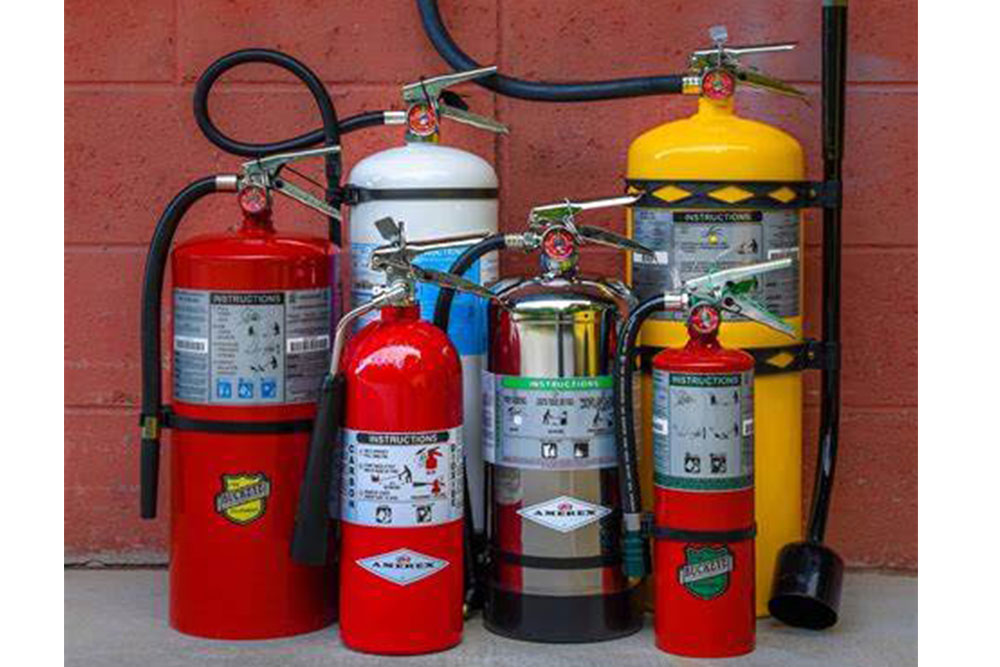 06
Feb
06
Feb
An Overview Of Industrial Fire Protection Systems
- 0 Comment(s)
- February 6, 2025
Fire safety is a critical aspect of managing industrial facilities. With hazardous materials and equipment present, the risk of fires is significantly higher. Industrial fire protection systems play a key role in safeguarding employees, assets, and operations. These systems include a combination of technologies and practices designed to detect, control, and suppress fires. By addressing fire risks proactively, you can reduce potential losses and maintain a safe working environment.
What Are Industrial Fire Protection Systems?
Industrial fire protection systems are designed to detect and suppress fires in industrial settings. They include various components such as fire alarms, sprinklers, extinguishers, and smoke detection systems. These systems aim to protect employees, prevent damage to equipment, and limit downtime caused by fire-related incidents.
Facilities that handle hazardous materials, flammable liquids, or high-temperature processes need robust fire protection measures. The systems monitor for potential fire hazards and activate suppression methods when necessary. They work not only to extinguish fires but also to prevent their spread to other areas of the facility. By implementing these systems, you can minimize risks, reduce damage, and improve safety for everyone in your organization.
The Importance of Fire Detection Systems
Fire detection is the first line of defense in any fire protection strategy. Detection systems, such as smoke and heat detectors, monitor for signs of fire and activate alarms to alert occupants. Early detection reduces response times, enabling swift evacuation and timely intervention.
Detection systems work alongside fire alarms to provide comprehensive coverage. Alarms not only notify people on-site but can also send signals to local fire departments or emergency responders. This communication ensures faster action to contain the situation. Installing reliable detection systems is a proactive step toward minimizing fire risks, protecting assets, and saving lives in industrial environments.
Key Components of Fire Suppression Systems
Fire suppression systems are designed to control or extinguish fires quickly to minimize damage. Automatic sprinkler systems are among the most effective components, dispersing water over affected areas to control flames. These systems activate automatically when they detect heat or smoke, providing immediate response without requiring manual operation.
Portable fire extinguishers complement sprinkler systems by allowing employees to tackle small fires before they spread. Different types of extinguishers, such as those for chemical fires or electrical fires, address specific risks in industrial environments. Fire barriers, including fire doors and partitions, help contain flames and prevent them from reaching other parts of the facility. These systems work together to create a comprehensive safety net for your operations.
The Role of Fire Safety Training
Training employees on fire safety is an essential part of managing fire risks. Workers should understand how to use fire extinguishers, recognize potential hazards, and follow evacuation procedures. Training sessions should include hands-on demonstrations to build confidence in responding to emergencies.
Regular refresher courses keep employees informed about updated safety practices and regulations. Training also emphasizes teamwork, ensuring that employees can work together effectively during an emergency. When staff members are well-trained, they can make quicker decisions, reducing risks and minimizing damage. A well-trained workforce contributes to a safer workplace and fosters a culture of safety across all departments.
Maintaining Industrial Fire Protection Systems
Regular maintenance keeps fire protection systems reliable and effective. Inspections should include checking fire alarms, sprinklers, extinguishers, and detection systems for functionality. Maintenance schedules should align with industry standards and regulatory requirements to avoid compliance issues.
Maintenance tasks include testing system components, replacing worn-out parts, and cleaning sensors to ensure accuracy. Documentation of inspections and repairs provides a clear history of system performance and highlights areas for improvement. Keeping systems in optimal condition ensures that they perform when needed and reduces the likelihood of equipment failure during emergencies. Regular maintenance also extends the lifespan of your systems, saving costs in the long run.
How Advanced Technology Supports Fire Protection
Advances in technology have improved the effectiveness of fire protection systems. Modern systems use real-time monitoring to detect fires faster and with greater precision. Automated alerts and remote access features enable managers to monitor safety systems from anywhere.
Some facilities use AI-driven systems that analyze patterns to predict potential fire risks. These systems enhance prevention strategies by addressing hazards before they escalate. Advanced technology also simplifies compliance by automating tasks such as inspections and documentation. Integrating these innovations into your fire protection plan strengthens your ability to protect assets and respond effectively to emergencies, creating a smarter and safer facility.
The Value of Customizing Fire Protection Systems
Every industrial facility faces unique fire risks, depending on its layout, materials, and processes. Customizing fire protection systems ensures that your specific needs are met. For example, facilities handling chemicals may require specialized extinguishers, while those with large machinery might benefit from advanced suppression systems. Custom designs take these factors into account, providing comprehensive protection that aligns with your operations.
Working with experienced professionals to tailor your fire protection system ensures that all areas are covered effectively. This approach minimizes vulnerabilities and enhances the safety of both employees and assets, creating a robust defense against fire hazards.
Reducing Downtime with Effective Fire Safety Measures
Fires in industrial settings not only threaten safety but also disrupt operations, leading to costly downtime. A well-maintained fire protection system helps contain incidents quickly, allowing your business to recover faster. By integrating systems such as automated alarms, sprinklers, and fire barriers, you can reduce the spread of flames and protect critical equipment.
Regular maintenance further enhances system performance, preventing malfunctions that could delay response times. Investing in comprehensive fire safety measures ensures continuity for your business while safeguarding employees and property, making fire protection a critical part of operational resilience.
Partnering with Professionals for Fire Safety
Managing industrial fire protection systems can be complex, which is why partnering with experts can simplify the process. Professionals can assess your facility, recommend suitable systems, and guide you through proper installation and maintenance. They bring specialized knowledge and industry insights to address unique challenges and create tailored solutions.
At Yadkin Fire & Safety, we help businesses like yours with services that include equipment sales, inspections, and ongoing support to keep your facility compliant and secure. With our fast response times and commitment to customer education, we empower businesses to maintain their safety systems confidently. Partnering with us ensures your fire protection systems are optimized and ready to perform when needed.
Industrial fire protection systems are essential for safeguarding employees, equipment, and operations in hazardous environments. Understanding their components, maintaining them properly, and training employees are key steps in mitigating fire risks. Regular inspections, advanced technology, and professional support contribute to a safer and more efficient workplace. For expert guidance or to learn more about our services, contact us today.

